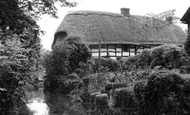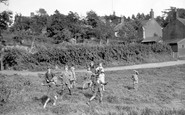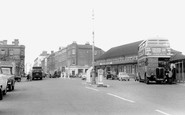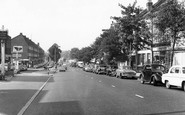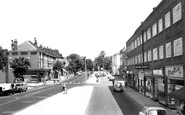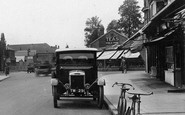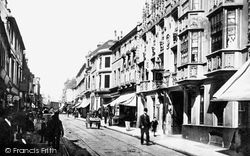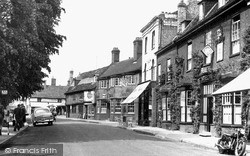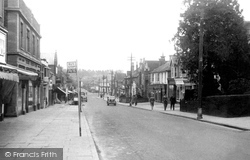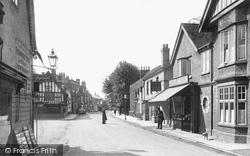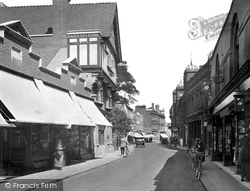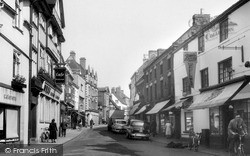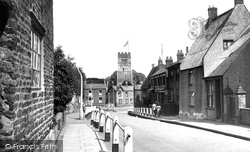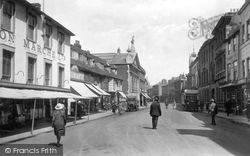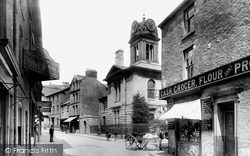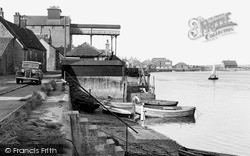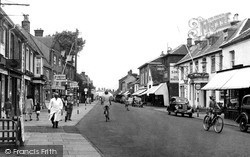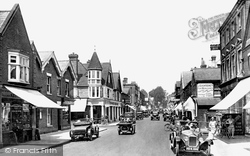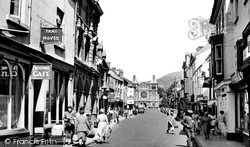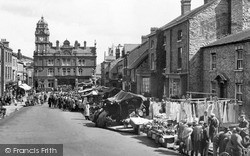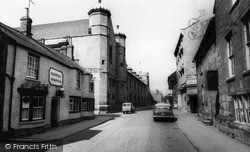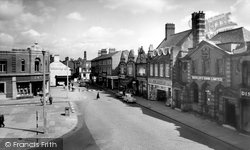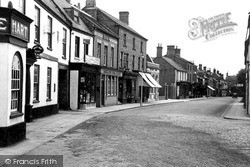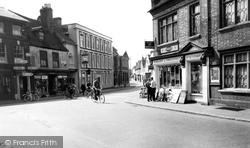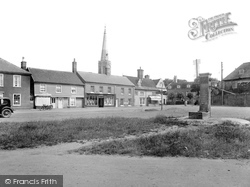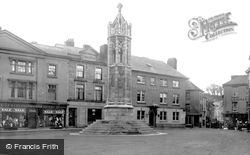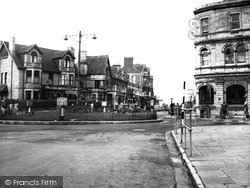Merry Christmas & Happy New Year!
Christmas Deliveries: If you placed an order on or before midday on Friday 19th December for Christmas delivery it was despatched before the Royal Mail or Parcel Force deadline and therefore should be received in time for Christmas. Orders placed after midday on Friday 19th December will be delivered in the New Year.
Please Note: Our offices and factory are now closed until Monday 5th January when we will be pleased to deal with any queries that have arisen during the holiday period.
During the holiday our Gift Cards may still be ordered for any last minute orders and will be sent automatically by email direct to your recipient - see here: Gift Cards
Photos
Sorry, no photos were found that related to your search.
Maps
36 maps found.
Books
Sorry, no books were found that related to your search.
Memories
141 memories found. Showing results 41 to 50.
Memories Of My Life In Kibblesworthnee Graham
I was born in Kibblesworth in 1945 but my parents and I moved back to our flat in the Redheugh Area of Gateshead when I was about two or three. But mam put me on the bus every Sunday morning to ...Read more
A memory of Kibblesworth in 1953 by
Wartime Boarding School
I was evacuated from London to Blewbury Healm-wic Boarding School in 1941 (the thatched cottage shown in the photograph). The Williamson sisters ran the school, owned I believe by their brother, a naval architect ...Read more
A memory of Blewbury in 1940 by
Burnt Oak In The Second World War And After
I moved to Burnt Oak in May 1940, to 84 Fortescue Road. I was 4. My memories are like a batch of video clips, as follows: Moving in. Removal men trying to get a wardrobe into the front bedroom by ...Read more
A memory of Burnt Oak in 1940 by
Old John Barley Corn....
Known as the 'John Barley Corn' children because at the Staithe where they all used to play, there is an inlet. In the 1920s, when boats came past, the children would sing 'Old John Barley Corn if you throw us a penny we will ...Read more
A memory of Belaugh in 1920
My Home Town
My wife moved to Sutton 1950 aged 4, now aged 60 and living in Norfolk we are rekindling memories of such a warm and inviting town. Memories come flooding back. The railway station, the cinema, the old tree outside Trueforms where my ...Read more
A memory of Sutton in 1963 by
1960s Shopping In Uxbridge Road, Hatch End
On the left of this view is the pub sign for the "Railway Hotel" - a popular drinking venue for older members of St Anselm's Youth Club and the Hatch End Young Conservatives! Next door is a garage ...Read more
A memory of Hatch End in 1965 by
Fabulous Hatch End
I also remember this scene of Hatch End. I lived in the Pub which just about appears in this picture on the top far right, its the white buillding that is just sticking out slightly. Next door to the pub was the Conoco garage ...Read more
A memory of Hatch End in 1967 by
Memories Of Wooburn From America
My mother, Vera Brown, was born in Wooburn Green and lived at 135 Boundary Road until she came to America to marry my father after WWII. (My father was based in High Wycombe during the war.) As my gran and ...Read more
A memory of Wooburn Green in 1965 by
Fond Memories.
I lived in Coval Lane from my 1st birthday to my 24th birthday - 1948/1971. Then I got married and moved out. At that time the shop on the corner was a wool shop because my mum, an ardent knitter, bought most of her wool there. I ...Read more
A memory of Chelmsford by
The Providence Congregational Church 1956
"The Providence", as it was commonly known, stood at the corner of Laundry Yard and The Lynch. Built in 1795 with a later facade it was a gem of late georgian "chapel" architecture. You entered through a ...Read more
A memory of Uxbridge in 1955 by
Captions
174 captions found. Showing results 97 to 120.
On the corner was the Provincial Co-operative Drug Co (centre), and next was the Barley Mow tavern run by William Ellis.
The corner building had the plaster removed in 1932, when it became Barclay's Bank. The Market Cross can just be seen in the distance.
Virtually all of the buildings in this photograph have been replaced; today the Orchards Shopping Centre is on the left, whilst on the opposite side of the road are currently Barclays Bank
The timbered building on the left, occupied at the time by Barclays Bank, was originally built with plastered upper walls and gables, later exposed to give the building a mock Tudor flavour.
Many buildings survive, apart from the 1890s mock- Tudor Barclays Bank, which was rebuilt in the 1980s.
Gazing up the street past Wilks Teenage Fashions (left) with the Elkes Cafe above, we can see Barclays Bank. This was built in 1921 on the site of Huggins & Chambers, an ironmonger's.
The Earl of Huntingdon lived nearby, and the village gets the other half of its name from his association with barley farming. The Queen Mother has made several visits to Earls Barton.
An early omnibus collects passengers bound for Ware, Cheshunt, Broxbourne and Waltham Cross from outside Barclays Bank.
On the corner was the Provincial Co-operative Drug Co (centre), and next was the Barley Mow tavern run by William Ellis.
It exported copper, iron, slate, barley, bobbins, gunpowder and leather all over the Empire.
This was originally constructed in stone in 1853 as a 250-yard-long working quayside for vessels trading in barley, linseed cake, corn, timber, salt, malt and manure, rather than for holidaymakers
Beyond Barclays bank, on the left, the United Reformed Church is set back from the street. A cluster of bus signs has begun to gather on the left.
Simonds Bank is now Barclays, and Armstrongs has become Eighteens. A tea-room has opened on the corner of Princess Street to cater for the increase in the population.
Barclays Bank, next door, still operates in what has been banking premises for over 120 years.
Overlooking the scene is the grand building and clock tower housing Barclays Bank.
This building, a fine example of a Georgian town house, is now Barclays Bank.
Opposite is the Central Hotel and Barclays Bank. The White Hart is shown on a town map of 1839 and is likely to be 15th-century in origin.
The main change that immediately strikes the visitor today is that the lovely old Victorian Barclays Bank building (right) has gone, to be replaced by yet another typical 1960s monstrosity.
E J Tong the ironmongers next door are still in business and still in the same building, and so is Barclay's Bank.
The three- storey building with painted architraved frames to the rows of sash windows is the early 18th-century White Hart, and beyond is a pedimented neo-Georgian 1930s Barclays Bank.
On the left is A J White, watch and clockmaker (the other half of the building was Barclays Bank, open on Wednesdays), George Howe, draper and grocer, Adam's, baker and confectioner, and the Crown.
We start with the White Hart (left); then comes A J White, watch and clockmaker (the other half of the building was Barclay's Bank, open on Wednesdays), George Howe, draper and grocer, Adam's, baker and
Of the businesses that surrounded the square in 1922, only four remain in their original positions: Barclay's Bank, originally built for the East Cornwall Bank in 1885 with the town clock on its corner
It became Barclays (left) after bank amalgamation of 1919.
Places (0)
Photos (0)
Memories (141)
Books (0)
Maps (36)

